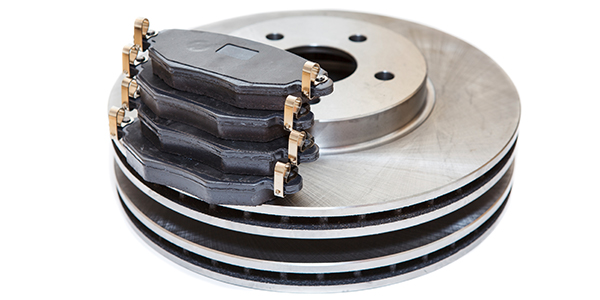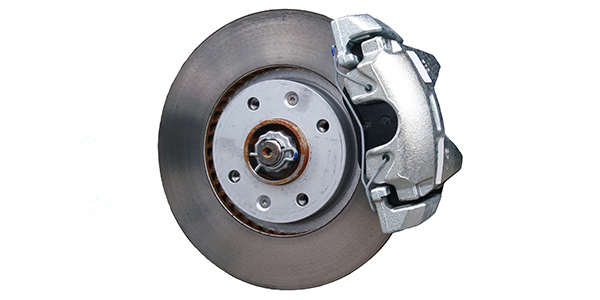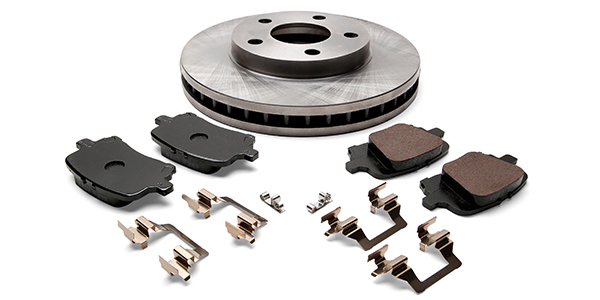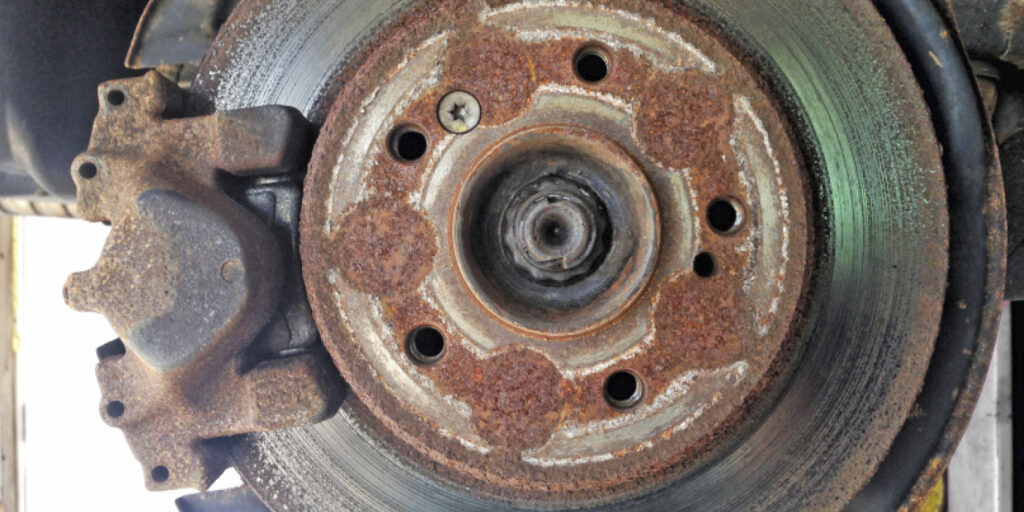There are some myths about brake pads, rotors and hydraulics that need to be busted. These myths can hurt and hinder a technician’s ability to diagnose and solve some REAL brake problems and customer concerns.
On the surface, some of these myths actually seem to make sense. The logic can seem sound and explain a problem, but they do not resolve the real issues with a brake system.
1. A Rotor’s Minimum Thickness Specifications Are Based On Heat
False – The discard or minimum thickness specification is based on travel of the caliper piston if the pads were worn to the backing plates. If you had worn pads and a rotor below specification, there is a possibility the piston could start leaking and possibly become dislodged from the bore, causing a failure of the brake system. Heat, fading or thermal stability have nothing to do with discard specifications.
2. Soft Pads And Hard Pads Are A Measure Of Brake Performance
False, with a pinch of engineering truth – The engineering term for measuring the hardness of brake pads is compressibility. Engineers typically measure compressibility as a manufacturing quality control measurement and not as a performance measurement. Compressibility is an important characteristic and can influence pedal feel, but it has very little to do with noise, rotor wear and pulsation.
What the driver is experiencing is the type of friction (tribology) the material is using to stop a vehicle. A “hard pad” is a pad that is abrasive to the rotor. This could be classified as a semi-met pad, which can offer very stable friction over a wide range of temperatures.
What a technician or customer thinks of as a “soft” pad is typically an organic or ceramic formulation. How these friction materials generate brake torque is by adhesion type of tribology. These friction materials leave or transfer a layer of friction material (transfer film or “seasoning”) on the rotor’s surface that some friction material companies claim can smooth out the rotor surface, thereby causing less excitation and noise at the friction coupling. Also, this transfer layer may not be as sensitive to heat induced brake torque variation. Some of these friction materials can be friendly to rotors.
Both of types of friction materials can be the same in terms of compressibility. Calling one material soft and one hard is not possible unless your shop has a $20,000 machine to measure the compressibility of the materials.
Compressibility can influence pedal feel, but only in extreme cases where the pad could be defective. What really influences pedal feel is the coefficient of friction of the brake pad.
The bottom line is that if you want to call a brake pad hard or soft, you need to have the laboratory equipment. But if you want to test a pad you might want to try it on your own vehicle.

3. Damaged Brake Hoses Can Cause Brakes To Drag
True, with a little paranoia – The myth usually starts on a vehicle where the brakes are stuck on at just one wheel. The technician tries just about everything and eventually theorizes it is a restriction in the brake hose.
Brake hoses can be damaged by road debris, sharp pliers or rusty clamps. Stock brake hoses are typically three or four layers. All modern hoses have a stiff internal liner that is in contact with the fluid while the outer layers are typically a softer material designed to absorb impacts with road debris.
The myth typically claims that the inner liner was damaged and created a flap or check valve in the line. This check valve prevents the pressure from releasing at the caliper. This situation has been known to happen to older brake lines from the 1960s and it can occur today if the conditions are right.
What is happening to the brake hose that cause the internal layers to start to leak so the fluid works its way between the inner liner and outer layers? The fluid pressure causes the hose to delaminate.
However, don’t dismiss the obvious damage that can cause brake drag. Chances are, the restriction could be a stuck emergency brake, caliper slides or even a problem with the metering/combination valve. Also, many stuck brake problems are related to brake booster or meter/combination valve problems.
You can use a brake force analyzer that places blocks with load cells where the brake rotor would be. This tool can measure the clamping force of the calipers. Since calipers share the same hydraulic pressure supply, the force should be the same. If the caliper is binding or the hoses are damaged internally, the gauges for the load cell might not read the same. Also, if there is an internal restriction the pressure might not return to zero.
4. Wet Brake Rotors Increase Stopping Distances
True and False – Remember when you were first learning to drive and some adult told you to tap the brake pedal after you drove through a puddle? In the days of drum brakes, this was good advice, but with disc brakes this piece of advice does not hold water.
As a vehicle is moving, water is thrown off the face of the rotor by centrifugal force. Any water on the pads is usually inconsequential – though under certain circumstances, the water can increase stopping distances. Some manufacturers have programmed the ABS to gently pulse the brakes if the wipers are activated.

5. Replacement Brake Pads Are Regulated By The Government
False – There are no government regulations concerning brake pad performance. The only standards for brakes are from states like California and Washington that have developed standards for copper, heavy metals and even asbestos. The Federal EPA’s Copper-Free Brake Initiative, in conjunction with these states, is aimed at reducing brake pad pollution but does not address performance characteristics.
6. Brake Pads Need To Warm Up
False – Street brake pads are designed to produce consistent brake torque even at very low temperatures. This is true even for exotic carbon ceramic brake systems on street-driven vehicles.
The exception for this myth is high performance racing pads that require some heat in the friction material to generate its highest coefficient of friction. Manufacturers of these pads will say they should only be used for off-highway purposes.

7. Brake Pads are the Source of All Brake Noise
True and False – All brake pads do produce vibrations when they are applied – this happens on all brake systems but it’s how the vibrations are transferred to the rest of the vehicle that cause a driver to hear or not hear the noise. A brake pad is merely a string on a guitar: it is up to the player or vehicle to decide how it sounds.
Humans have a limited range of hearing so the sound made by some brake pads might be unheard.
Noise can be caused by a change of the friction material due to heat. A “consistent” friction material causes less vibrational excitation variation at the friction coupling by having consistent brake torque at environmental extremes of humidity and temperature (-40º F to 500º F).
Typically, high frequency noises come from the caliper, rotor or bracket. Low frequency noises, like growls, grunts and moans can be caused by struts, knuckles or even the body structure.
The best option for technicians is to always isolate the pads with lubricants and shims and to restore the hardware to like-new condition.














